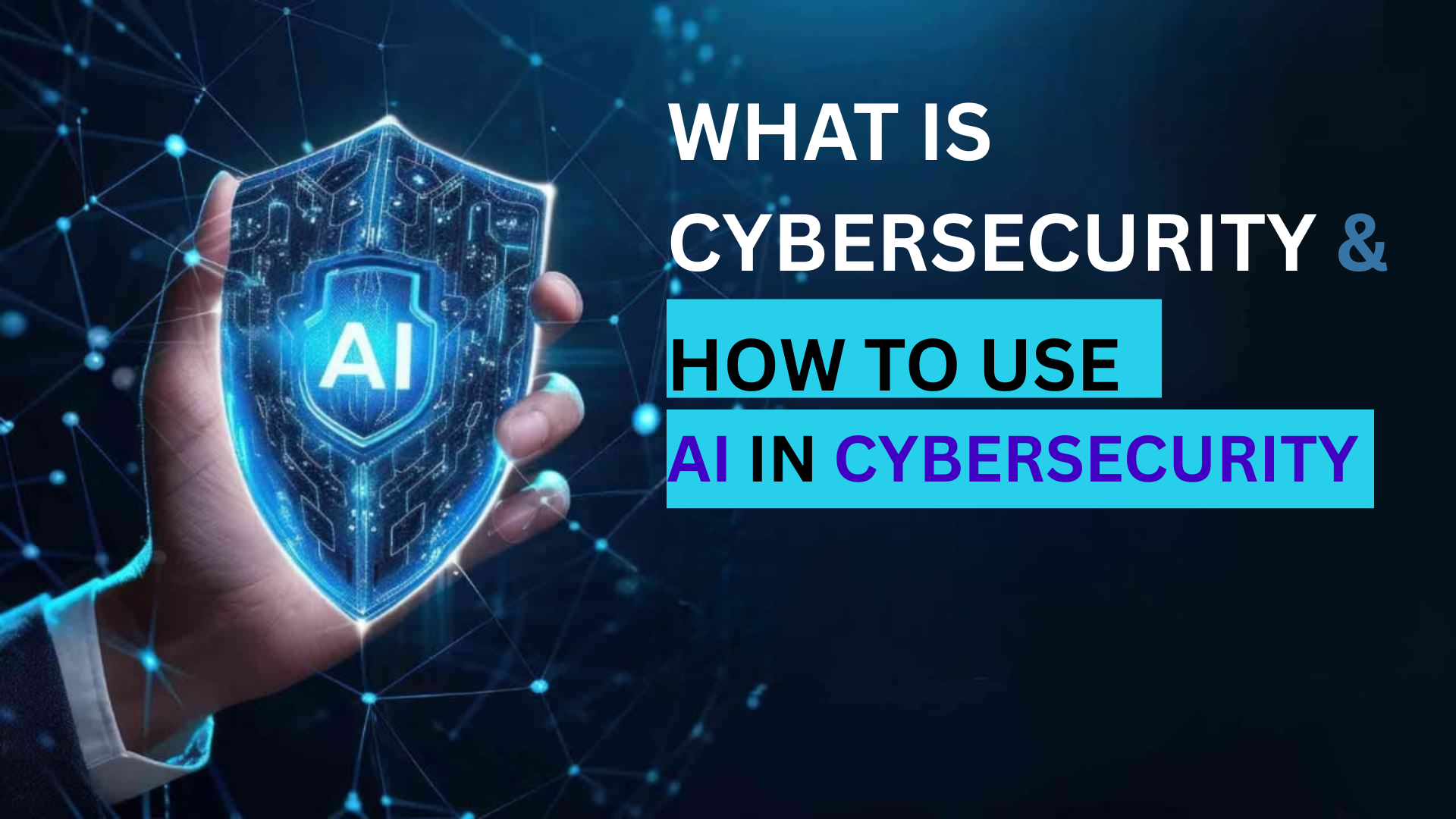What is Cybersecurity and How to Use AI in Cybersecurity

Our online lives are in constant danger in the hyperconnected world of today. Large-scale cyberattacks and breaches of personal data make strong cybersecurity more important than ever. What precisely is cybersecurity, though, and how can we use artificial intelligence (AI) to keep ahead of changing threats? Let's examine how artificial intelligence is changing the digital security scene.
What is Cybersecurity?
Cybersecurity is the practice of protecting digital systems, networks, and data from unauthorized access, damage, or theft. It's about ensuring the confidentiality, integrity, and availability of information in the face of malicious attacks.
Think of it as building a digital fortress around your valuable assets, preventing intruders from breaching your defenses.
The importance of Cybersecurity:
- The digital landscape is rife with threats, ranging from individual phishing scams to large-scale ransomware attacks that can cripple entire organizations.
- Cyberattacks can lead to devastating consequences, including financial losses, data breaches, reputational damage, and even disruption of essential services.
- With the proliferation of connected devices and the increasing reliance on digital technologies, robust cybersecurity measures are no longer optional—they’re essential.
Fundamental Cybersecurity Practices:
- Strong Passwords and Multi-Factor Authentication (MFA): The first line of defense against unauthorized access.
- Regular Software Updates and Patching: Closing known security vulnerabilities.
- Phishing Awareness and Prevention: Educating users to recognize and avoid deceptive emails and websites.
- Antivirus and Anti-Malware Software: Detecting and removing malicious software.
- Firewalls and Intrusion Detection Systems (IDS): Monitoring network traffic for suspicious activity.
- Data Backups and Recovery: Ensuring data can be restored in the event of a breach.
The Transformative Power of AI in Cybersecurity:
- AI is revolutionizing cybersecurity by automating tasks, enhancing threat detection, and enabling proactive defense strategies.
- Its ability to analyze vast datasets and identify complex patterns makes it ideal for combating sophisticated cyberattacks.
Key Applications of AI in Cybersecurity:
- Threat Detection and Prevention: AI algorithms can detect anomalies in network traffic, user behavior, and system logs, flagging potential threats in real-time. For example, machine learning can detect unusual network traffic patterns that could indicate a DDoS attack.
- Automated Incident Response: AI-powered systems can automate security responses, such as isolating infected systems, blocking malicious IP addresses, and triggering alerts. This speeds up reaction times and minimizes damage.
- Vulnerability Management: AI can scan systems and applications for vulnerabilities, prioritizing them based on risk and providing recommendations for remediation.
- Behavioral Analytics: AI can analyze user behavior to detect insider threats, account takeovers, and other suspicious activities. For instance, AI can detect when a user is accessing files outside their normal work patterns.
- Malware Analysis: AI can analyze malware samples to identify their characteristics, behavior, and potential impact, helping security teams develop effective defenses.
The Advantages of AI-Driven Cybersecurity:
- Enhanced Threat Detection: AI can identify subtle anomalies and complex patterns that human analysts might miss.
- Faster Response Times: Automated responses reduce the time it takes to contain and mitigate attacks.
- Improved Efficiency: AI can automate routine security tasks, freeing up human analysts to focus on more complex threats.
- Proactive Threat Hunting: AI can help identify potential threats before they materialize.
Implementing AI in Your Security Strategy- Practical Steps
- Choosing the Right AI-Powered Cybersecurity Tools:
- Evaluate your specific security needs and select AI-powered solutions that align with those needs.
- Consider factors such as accuracy, scalability, integration capabilities, and ease of use.
- Research reputable vendors and read customer reviews.
- Integrating AI into Your Existing Security Infrastructure:
- Ensure that AI tools can seamlessly integrate with your existing security information and event management (SIEM) systems, firewalls, and other security infrastructure.
- Develop a comprehensive security architecture that leverages the strengths of both AI and human expertise.
- Continuous Monitoring and Improvement:
- AI models require ongoing training and refinement to stay effective against evolving threats.
- Implement continuous monitoring to track the performance of AI-powered security systems and make necessary adjustments.
- Keep up to date with the latest AI and cyber security developments.
- Human-AI Collaboration:
- AI is a powerful tool, but it's not a replacement for human expertise.
- Foster a collaborative approach that leverages the strengths of both AI and human analysts.
Conclusion:
Cybersecurity is an ongoing battle against increasingly sophisticated threats. By understanding the fundamentals of cybersecurity and embracing the transformative power of AI, we can build a more secure digital future. AI is not a magic bullet, but rather a powerful tool to be used by trained security professionals.